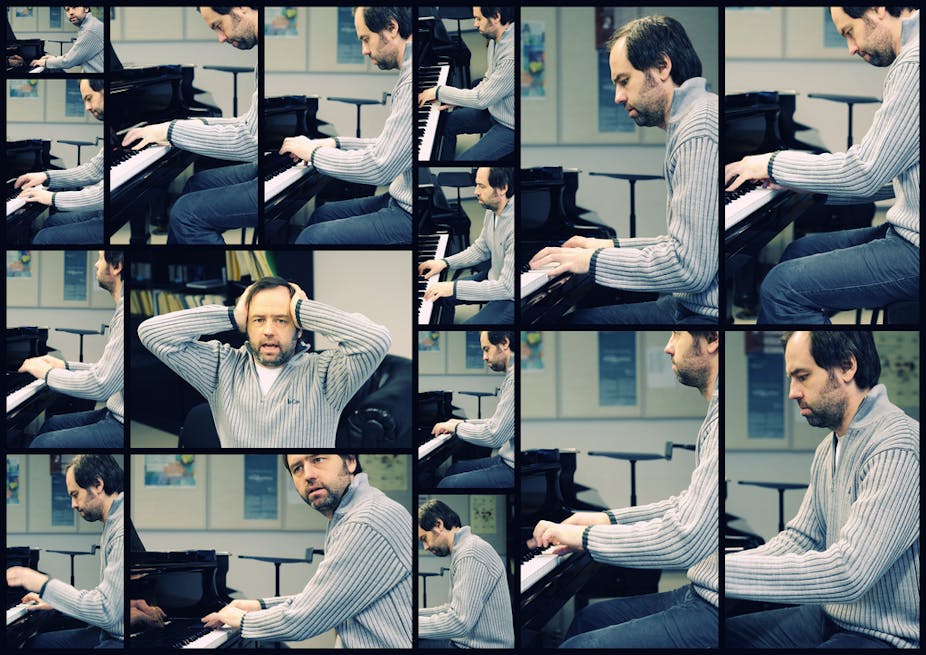Innovation is much sought after in music – by musicians, often, by the federal government, increasingly. But could the pursuit of the slightly nebulous-sounding “innovation” be driving music in the wrong direction?
The history of Western classical music focuses on the originality of music. It singles out the great masters – Bach, Mozart, Beethoven, Wagner, Debussy, Schoenberg, Webern, Stravinsky, Messiean and Cage – as exceptional. It unfolds a rich narrative that points to the innovative nature of the masterworks.
Innovation is understood as breaking new ground; it gives music new styles and genres, and ushers in the Baroque, Classical and Romantic periods. The 20th century gives birth to new tonal and rhythmic languages.
Schoenberg (1874-1951) suspended the tonal system with his 12-note music (serialism), and Stravinsky (1882-1971) challenged the tyranny of the bar line, “by introducing irregular accents, syncopation and frequent changes of meter”.
With the advent of computer technology, composers became interested in exploring the full potential of sound and noise, and 20th-century classical music is characterised by dynamic invention and innovation.
Two streams
Two major streams are apparent in the 20th century: serialism (12-note music) followed by, and overlapping with, reactionary minimalism (with its repetitive rhythmic patterns and return to the simplicity of tonality).

Minimalism (re)ushers in the major triad (a three-note chord) and revels in its simplicity as a counterfoil to serialism’s complexity. Minimalism invents new ways to energise music. Repetitive rhythmic patterns are put to work on small motivic (fragments of melody) structures.
The ethos of postmodernism (which rejects the idea of a singular history of music in favour of its diversity and multiple perspectives) then gives birth to a melting pot of styles, genres and sub-genres.
The pluralism of postmodernism makes music dizzy with labels – post-minimalism, post-serialism, post-style, new spirituality, etc. – and blurs boundaries between highbrow and lowbrow music.
But, how much of the music composed in the 21st century would we really call innovative?
High stakes
Composers and new music groups make innovation their raison d’être. Their marketing paraphernalia is replete with language suggesting excellence and innovation. The publicity material of the well-known Sydney-based Ensemble Offspring informs us the ensemble is “dedicated to the performance of innovative new music” and “pursues an agenda of directly shaping the music of our future”.

New York’s Bang on a Can similarly advertises itself as “dedicated to innovative music, wherever it is found,” while building “a world in which powerful new musical ideas flow freely across all genres and borders”.
These groups may indeed be performing the most innovative composers. But what is also emerging is a much more heightened gravitational pull of music to money. This has meant that for composers to survive they’ve become much more fiercely competitive.
They woo contemporary performing ensembles, hoping for commissions. And they spend excessive amounts of time filling out funding applications and writing up reports at the conclusion of projects, no doubt explaining they were successful in the innovative stakes.
Two kinds of composers
Funding bodies, such as the Australia Council, emphasise the importance of creativity as an:
increasingly strategic value to nations such as Australia in making the transition to innovation and knowledge-based economies.
The pursuit of innovation by the federal government puts pressure on the arts community to deliver it. Yet, it takes time, as the history of music shows us, for innovation to be delivered to music. It is impossible for composers to maintain a steady output of truly innovative work. Innovation cannot be manufactured.
Furthermore, the phenomenon of the “superstar composer” makes it difficult for the majority of composers to make a living as freelancers. The “superstar effect,” as coined by the late American economist Sherwin Rosen, means relatively small numbers of people dominate the activities in which they engage. For the few, “success breeds success”. For the majority, “the poor get poorer”.
There are arguably two kinds of composers. One is the superstar; the other subscribes to an “art-for-art-sake” manifesto. The superstar makes a relatively comfortable living on the proceeds of commissions, royalties and sales of his/her music through commercial outlets.

This kind of composer aims to please the audience by pandering to popular taste.
The other kind of composer does not care what the masses think. He/she composes for a select group of aficionados and is in constant pursuit of the innovative.
But it seems that even the composer who does not care what the masses think has exhausted the repertoire of possibility for the new. This is due, in part, to the heightened relationship of music with money and to the intensified competition this sets up among individuals. It seems that nowadays so-called “innovative” composers are searching for ways to out-innovate their competition.
In so doing, they are all doing much the same thing. They tweak an already discovered sound to make it seem new, redefine music as noise, and discover a new genre or style within an existing genre or style. In reality, the so-called new sub-genre or style resembles what they were trying to break out of.
They experiment with extending the capabilities of instruments and manipulating sounds in general but end up reproducing the known and familiar.
We have a problem
The experimental, pioneering new music composer has not really explored a different model of authorship. Sure, most people collaborate these days. But the division of labour is clearly defined, ultimately reflecting the contribution of each individual.
Not everyone can be a superstar. And very few can truly innovate, breaking new ground. So why not experiment with shifting the idea of composer into communities and collaborative spaces that aim to blur the boundaries between one composer and another?
De-emphasising innovation as an individual pursuit and accentuating collective, co-compositional engagements with music could mean that music once again becomes truly innovative.

